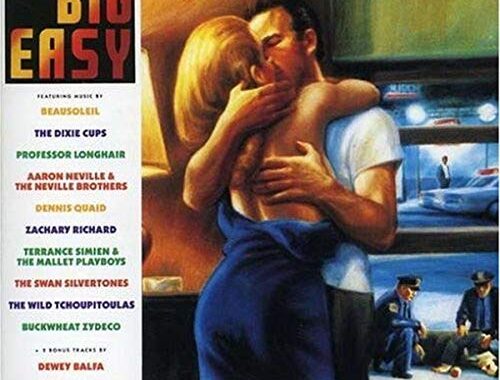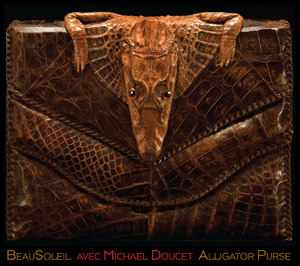Iko Iko

I’ve been hearing “Iko Iko” for years and years, primarily the Dixie Cups version from The Big Easy soundtrack and live versions from the Grateful Dead. But I never really took the time to understand what the lyrics were all about. “My flag boy and your flag boy”, “look at my king all dressed in red”, etc.
Well, here’s the story behind the song:
Following is the “Iko Iko” story, as told by Dr. John in the liner notes to his 1972 album, Gumbo, in which he covers New Orleans R&B classics:
“The song was written and recorded back in the early 1950s by a New Orleans singer named James Crawford who worked under the name of Sugar Boy & the Cane Cutters. It was recorded in the 1960s by the Dixie Cups for Jerry Leiber & Mike Stoller’s Red Bird label, but the format we’re following here is Sugar Boy’s original. Also in the group were Professor Longhair on piano, Jake Myles, Big Boy Myles, Irv Bannister on guitar, and Eugene ‘Bones’ Jones on drums. The group was also known as the Chipaka Shaweez. The song was originally called ‘Jockamo,’ and it has a lot of Creole patois in it. Jockamo means ‘jester’ in the old myth. It is Mardi Gras music, and the Shaweez was one of many Mardi Gras groups who dressed up in far out Indian costumes and came on as Indian tribes. The tribes used to hang out on Claiborne Avenue and used to get juiced up there getting ready to perform and ‘second line’ in their own special style during Mardi Gras. That’s dead and gone because there’s a freeway where those grounds used to be. The tribes were like social clubs who lived all year for Mardi Gras, getting their costumes together. Many of them were musicians, gamblers, hustlers and pimps.” – from this Wikipedia article
The Dixie Cups: Iko Iko (mp3) – from the Big Easy soundtrack (HIGHLY recommended)
So what is a Flag Boy??
Tootie Montana on Indian Hierarchy: The fundamental framework of a Mardi Gras Indian gang is a functional hierarchy. Montana spells out the positions: “You’ve got first chief, which is Big Chief; First Queen; you’ve got Second Chief and Second Queen; Third Chief and Third Queen. First, Second, and Third chiefs are supposed to have a queen with them. That’s just tradition. I found them doing that. Your fourth chief is not called fourth chief, he’s the Trail Chief. From there on it’s just Indians, no title. You also have your Spy Boy, your Flag Boy and your Wild Man. Your Spy Boy is way out front, three blocks in front the chief. The Flag Boy is one block in front so he can see the Spy Boy up ahead and he can wave his flag to let the chief know what is going on. Today, they don’t do like they used to. Today you’re not going to see any Spy Boy with a pair of binoculars around his neck and a small crown so he can run. Today a Spy Boy looks like a chief and somebody carrying a big old stick. It’s been years since I seen a proper flag. Today everybody has a chief stick. The Wild Man wearing the horns in there to keep the crowd open and to keep it clear. He’s between the Flag Boy and the Chief.” – – check out the whole Wikipedia article about Mardi Gras Indians.



One Comment
Ian Cully
The Wikipedia article on Iko Iko is now updated with Section 4 in which I give the original words of the song and their meaning in English. It was a chant between two indian tribes that Sugar Boy Crawford heard at Mardi Gras in New Orleans in 1953. He copied it down phonetically, and everyone has been singing the wrong words ever since. The chant is entirely in French Louisiana Creole except for one phrase which is Native American. This was the phrase written down by Crawford as ‘Jocomo fee na’ when what they were really chanting was ‘Chokma finha’. Chokma means ‘It’s good’ and finha means ‘very’ because in the Choctaw, Houma and Chickasaw languages the modifier goes BEHIND the verb, so they say ‘It’s good very’. The rest of the chant is pure Creole, and even Iko Iko is sung wrong. It was Akout (Creole for ‘Listen’ from the French word Ecoute) but they soften the A and the T at the end is silent, so they were chanting ‘AIKOu’ and Crawford wrote it down as Iko. Next week, you will see a Youtube video that takes you through the song with the original 19th century words and their English meaning. Or, alternatively, you can go on Google, type Iko Iko in the searchbox, then click on the link Iko Iko Wikipedia.
Hope this helps. Drop me a line (my email is ian.cully@wanadoo.fr) if you have any questions.
Ian